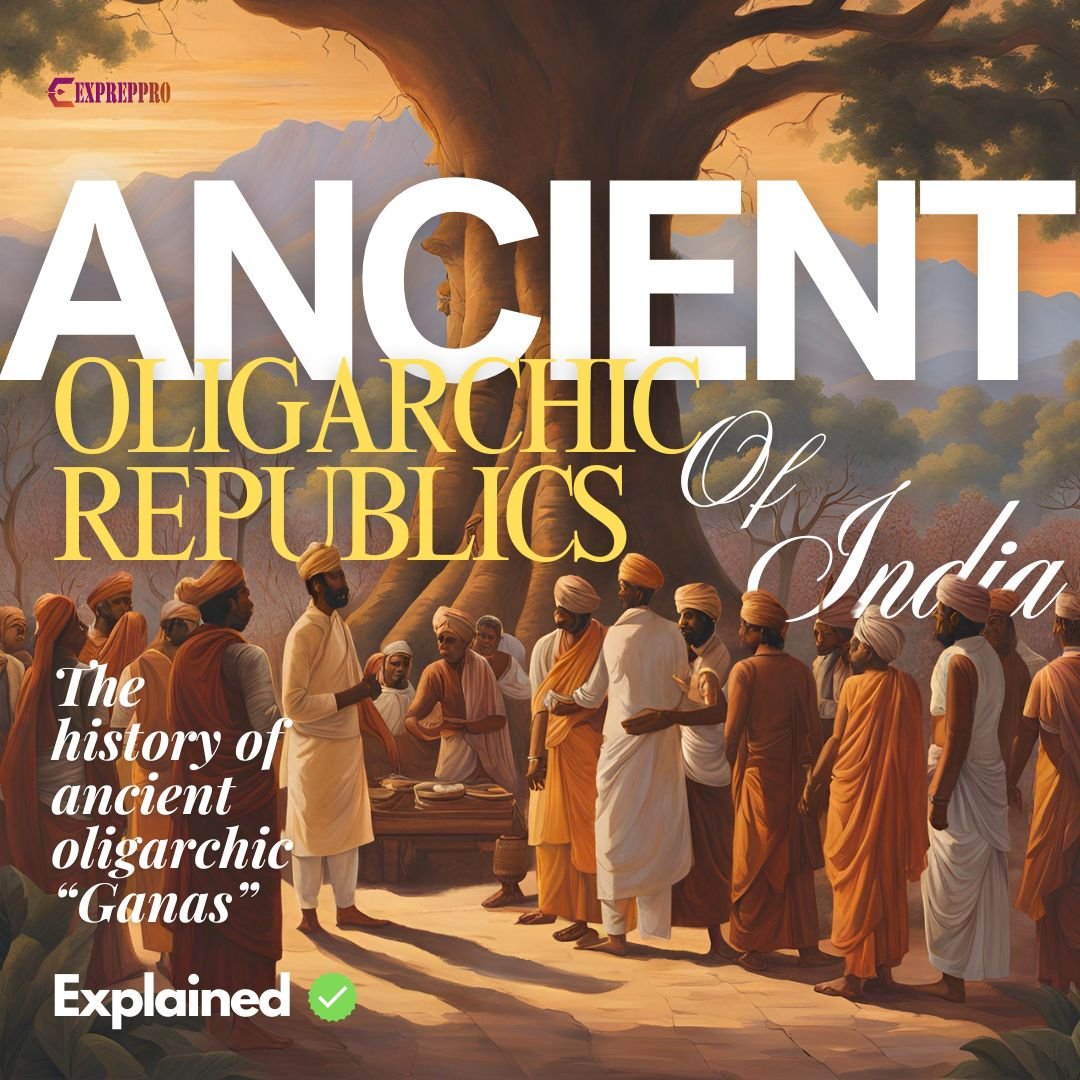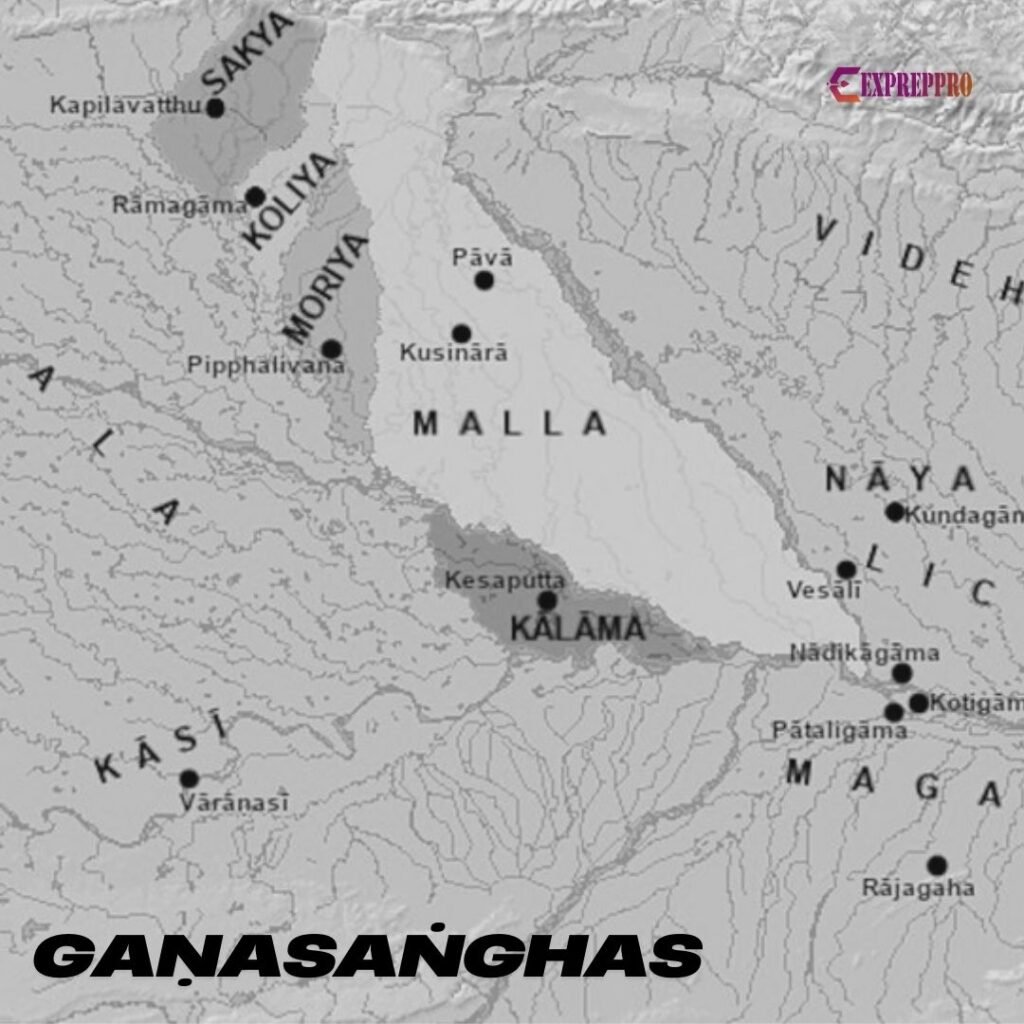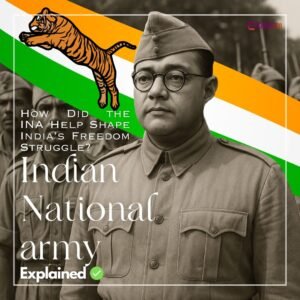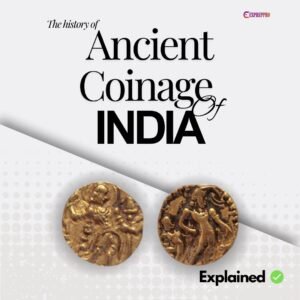
Ganas or sanghas are oligarchies or autonomous clans that existed in ancient India. In this system, a large number of people participate in the governance of the state.
Ganas had greater vestiges of tribal organisation than the monarchies and may have been more complex political forms of older tribal formation. Even though we claim them republics, they did not govern themselves like a real modern republic with an elected assembly.
Most Ganas, Sanghas, or tribal organisations are located in the Himalayan foothills and northern Bihar.
Which Republican States were Known As Gana Sanghas?
The following ganas or Sanghas existed in ancient India.
- Licchavis of Vaisali.
- Videhas of Mithila.
- Sakyas of Kapilavasthu.
- Koliyas of Ramagama.
- Moriyas of Kushinara.
- Mallas of Pava.
- Kalamas of Kesaputta.
- Bulis of Allakappa.
Yaudheyas, Malvas, Uddehikas, and Arjunayanas are seen on coins and inscriptions from the early centuries. They all belonged to Ganasanghas.
According to Ashtadhyai, Kshudrakas, Malavas, Ambashthas, Apritas, Vasatis, Bhaggas, Shibis, Ashvayanas, Ashvakayanas belong to ganas.
The Vajji and Malla, belonging to the list of sixteen Mahajanapadas, are also ganas or republics.

System Of Administration Of Ganas Or Sanghas.
The ancient system of ganas was not a true democracy but followed a different form of administration compared to monarchial states.
The power to rule was in the hands of heads of leading Kshatriya families. The chief was known as Ganapathi, Saghamukya, or Ganaraja.
The members of the ruling council assembled in a place called the Santhagara. It is the place where they hold their official meetings.
For the smooth performance of administration, they had a small executive council consisting of members from the main council. The political system that existed in Ganas is believed to be a compromise between the government by, the assembly and by an oligarchy within the assembly.
Each head is considered a raja. For example, according to Ekapanna Jataka, Lichchhavi had 7707 rajas to rule. According to Mahavastu, Vishali had 168000 rajas.
The rajas or members met once a year during the spring festival to discuss prevailing issues and elect their leader.
Voting in Ganas
The meeting will be announced by beating the drums.
During the meeting, voting was done using wooden pieces called Salakas. The council made decisions according to a majority vote or “Yebhuyyasika“. Once decided the decision cannot be reopened again.
After voting, the Salakas were collected by a Salaka-gahapaka or collecter of votes. A member with the highest integrity, moral qualities, and impartiality will be chosen for this position.
Ganapuraka was responsible for maintaining attendance and decorum in the meeting.
Army in Ganas
Like powerful states under the monarchy, ganas also maintained an army. But a permanent unit of the army was absent. Most of the soldiers were farmers. So, when the military was not engaged in war, the soldiers went back to farmlands. The chief of the army was called Senapathi.
Land Ownership in Ganas
Kshatriya elite were the largest landowners in the Ganas. According to some authors, the clan exercised rights over land and other properties. They project the story of Ambapali to prove their stand.
According to the story, Ambapali was a gorgeous woman who was not allowed to marry. She belongs to all the Lichcchavi men.
Licchavis of Vaisali
They belong to the modern-day bash Vaishali in Bihar. Their capital was Vaisali. Licchavis were a part of the Vajjian confederacy. In those days, they were powerful and influential, which helped them to collect the relics of Buddha.
The Licchavis of Vaisali was the neigbour of Magadha. River Ganga divided both states. Both states remained hostile due to political reasons.
At the time of Buddha, Licchavis were the largest autonomous state or ganasangha.
Apart from the 7707 members of the central council, a small nine-member council helped to conduct smooth administration. In the Jaina Niryavalika Sutra, Raja Cetaka is portrayed as a king assisted by a council of nine kings in dealing with administration.
Videhas Of Mithila
The capital of Videhas was Mithila, which was a part of the Vajjian confederacy. This state was located near present-day Janakapur, just within the Nepal borders (Terai region).
They were bordered by the river Kausiki in the east, Gandaka in the west, the Himalayas in the north and Ganga in the south.
Their council consists of three members and a raja.
Sakyas of Kapilavasthu
Sakya tribal autonomous state was located on the border of Nepal with the Trlaurakot. They are Kshatriyas claiming the lineage of Iksvaku or the solar race.
Buddha belonged to this state. There were many clans within the Sakya tribe, and Buddha belonged to the Gotama clan.
In the west, they had the Himalayas; in the east, they had river Rohini; and in the south, the Kosala kingdom. Beyond Rohini River, the territory of Koliyas of Ramagama begins.
According to some sources, they followed endogamy (other sources do not verify this statement. Koliyans had made such accusations). They clashed for Rohini river water with Koliyas of Ramagama. Once, Buddha even came to pacify both states.
After the massacre by Vidudhaba, the Sakyas virtually vanished from the history of India.
Kolyas of Ramagama
River Rohini divided the states of Koliya and Sakyas into two. They had Moriyas as their neighbour in the east, and in the southeast, they had Kosala.
Koliyas also claimed the legacy of Buddha and got the relic of Buddha after his parinirvana.
The Koliyan state had officials who wore a special headgear
called Lambaculakabhata. They were notorious for indulging in violence and extortion. According to ancient sources, they had at least four market towns or “nigamas”. Buddhist sources mention these four market towns: Haliddavasana, Kakkarapatta, Sapuga, and Sajjanela.
At last, with the help of Ajatasatru, Kosala annexed Koliyas.
Moriyas of Pipphalivana
This state lies between Lumbini and Gorakhpur. To their west, they had Koliyas as their neighbour. In the southwest river, Anoma or Rapti formed the border, and beyond Rapti was Kosla territory.
They are mentioned in the Piprahwa Vase Inscription. They also got a share of Buddha’s relics. According to Rama Shankar Tripathi, they are said to have been a branch of the Sakyas and were so called because their place ever resounded with the cries of Peakocks or “mora“.
Bulis of Alakappa
Bulis of Alakappa was located near the kingdom of Vethadipa, near modern Shahabad and Muzaffarpur.
Allakappa was ten yojanas in extent, and its king was on friendly terms with the chief of Vethadipa, a Brahmana village.
They also got their share of Buddha’s relics. This shows their importance during that period.
Kalamas of Kesaputta
Kalamas was an autonomous clan located south of the Mallas, below the river Ghagra to the north of the Ganga and northeast of Banaras.
Bhaggas of Sumsumagiri
This autonomous republic, with the capital Sumsumaragiri, appears to have been under the control of Vamsa Mahajanapada.
They are located south of the Ganga and around the Mirzapur district. They were an ancient clan identical to the Bhargas of the Aitreya Bhramana.



